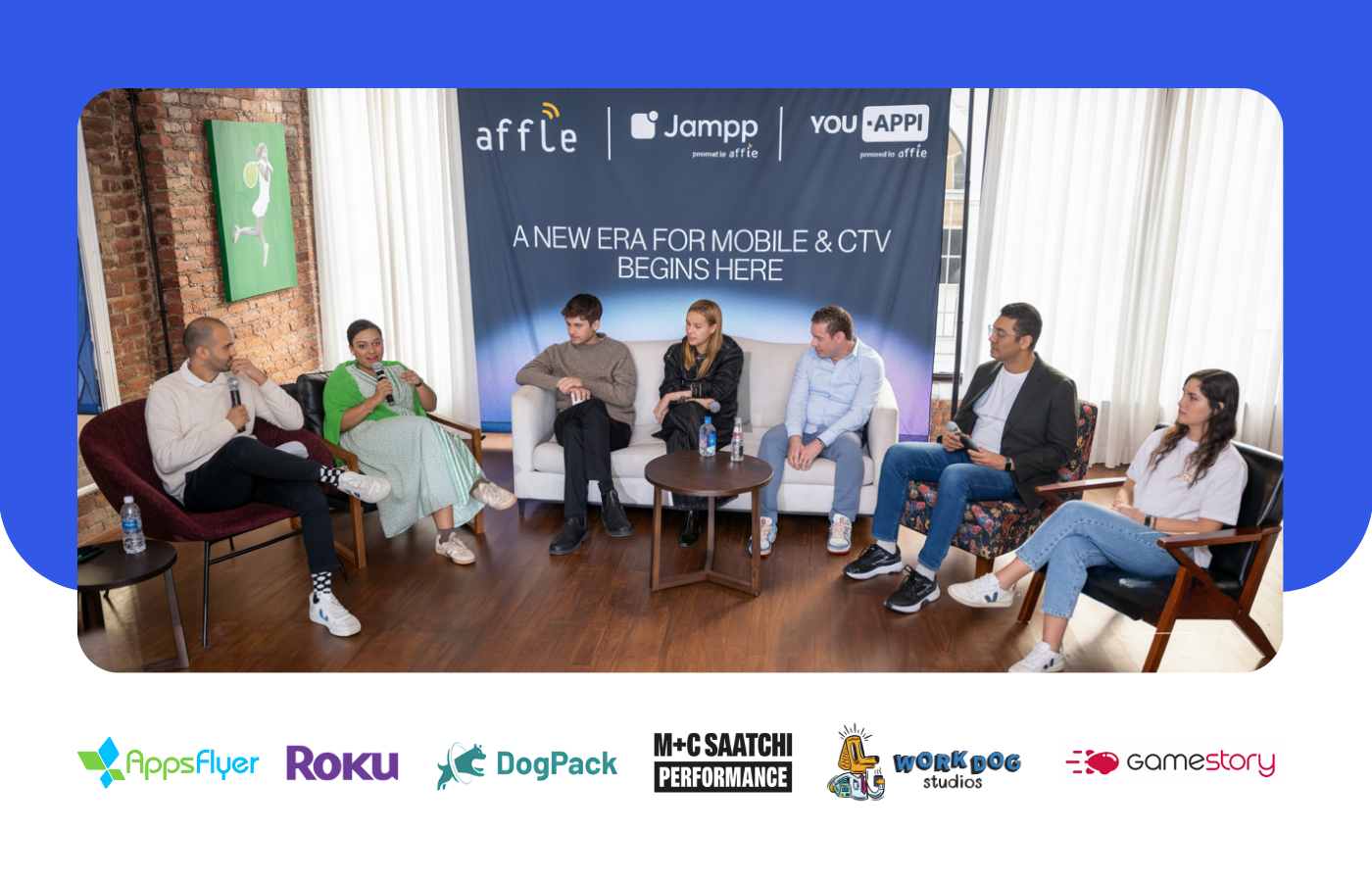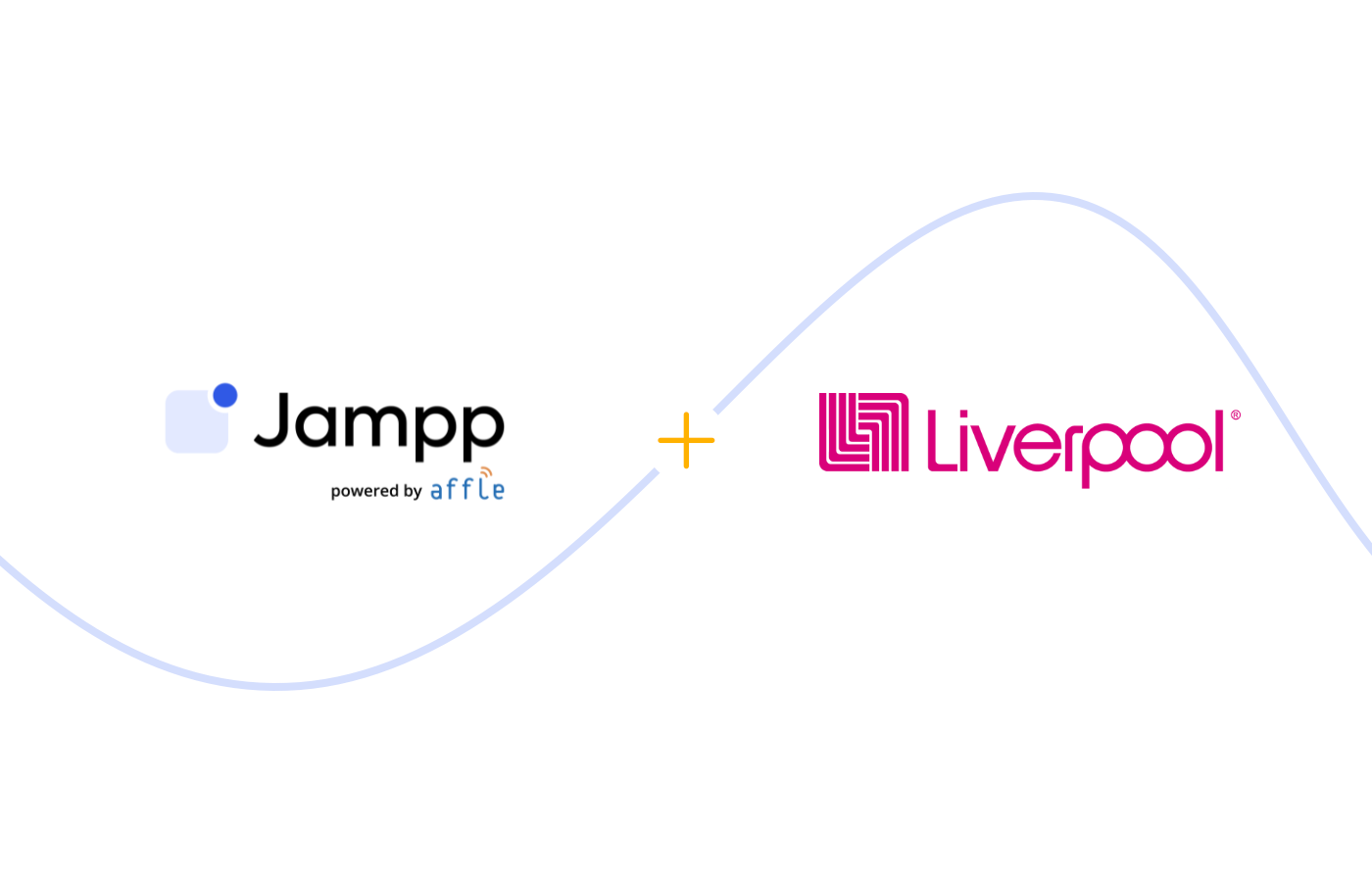A new age of mobile performance advertising could begin with AI
How generative AI and LLMs will revolutionize mobile advertising: opportunities and challenges for Jampp and the app growth industry.
April 12, 2023

As mobile usage continues to grow around the world, mobile advertising is already a massive (and still growing) part of the digital marketing landscape, with mobile ad spend set to hit $362B in 2023[1].
At Jampp, we are committed to helping our customers achieve success in mobile advertising by providing them with exciting tools to leverage programmatic ads and optimize for performance.
One of the most exciting developments in mobile advertising today is the use of generative AI, and LLMs models (like GPT) to drive better performance and ROI.
And of course, nobody thought of doing a blog post on this, so… here we go 😄.
The power of generative AI and GPT for mobile advertising
Generative AI has the potential to transform the mobile advertising landscape by enabling businesses to create highly personalized, engaging ad experiences that resonate with their target audience. By analyzing vast amounts of data on user behavior (with users’ consent to be tracked, of course) and preferences, these technologies can help businesses rapidly identify and target specific audience segments more effectively, resulting in higher engagement and conversion rates.
Meta, for example, seems to be focusing most of their efforts on AI (and not the metaverse) and plans to launch Generative AI Ads this year. As more companies start leveraging this technology, Generative AI continues to gain traction in the marketing industry, and it’s estimated to reach a value of $22.1B by 2032, growing at a CAGR of 28.6%[3].
Here are just a few examples and speculative ideas of how these technologies can be applied:
Creative optimization
Generative AI is impacting creative work in many ways. Generating dozens or hundreds of variations (both in copy and design) can now be done in a matter of seconds. This can result in more relevant and personalized ads that are tailored to the individual user's interests, leading to higher engagement rates and better ROI. For example, a Fashion brand could use GPT to generate new product descriptions and taglines, and then test them against existing ones to see which one performs best across different and very specific user segments.
Ad targeting
By analyzing multiple data points on user behavior and preferences, we can help our customers identify and target specific audience segments more effectively. This can prove particularly beneficial in mobile app advertising, where it's key to reach the right users at the right time, with ads that resonate with their unique interests.
Ad fraud detection
AI can be used to detect fraudulent activities in ad campaigns, leading to improved transparency and accountability in the mobile advertising ecosystem. For example, for ad verification, if an advertiser has specified that their ad should only be displayed on brand-safe news sites, generative AI can be used to verify that the ad is not being displayed next to unsuitable or irrelevant content for the target user.
Video ads
Generative AI and LLM models can be used to optimize the content and delivery of video ads, one of the top-performing ad formats for mobile apps. For example, generative AI can be used to create and animate personalized video ads for individual users on the fly, while LLMs models can be used to understand user intent and deliver more relevant video ads. Check what Meta is doing on “Make-a-video” and also HeyGen with Movio.
NLP for consumer intent analysis
LLMs models, like GPT, can be used to improve natural language processing and understanding of user intent. For example, a travel company could use GPT to analyze user search queries and predict their travel preferences, such as preferred destinations, activities, and budget. This can help the company deliver more targeted and relevant ads to users.
Predictive analytics
Identifying patterns and trends with AI can help optimize ad campaigns for better performance. This can include spotting the best times and channels to reach specific audience segments, optimizing ad creative based on user engagement and intent, and adjusting bidding strategies to maximize ROI.
Useful (mini) AI demos for mobile apps
We love getting creative when it comes to testing, so one of our Jamppers built a quick demo where you can prompt GPT to recommend copy options for an app:

When it comes to creatives, if you prompt MidJourney you can get high-quality visual assets that could be used in production:





When prompting Midjourney, things get even more interesting when you get more specific about the target audience…

Technical challenges and opportunities
While the use of generative AI in mobile advertising holds great promise, there are also many technical challenges that need to be overcome.
These challenges include the need for high-quality data and training sets (the more data, the better… but managing such large data sets requires advanced data processing techniques and infrastructure), developing sophisticated machine learning algorithms, and continuously optimizing those models and systems to ensure maximum performance and ROI (which is never easy).
In terms of LLM, not everything is ChatGPT and OpenAI APIs. Significant progress in projects like LLaMa or Alpaca now allows for customizing and training custom models locally/autonomously, and in a very cost-effective manner. This will enable the proliferation of tailor-made models for ad tech that will likely outperform the generic models we leverage today.
LLMs can also be used to automate tasks, such as testing and debugging code, freeing up valuable time for developers to focus on more complex tasks. Additionally, LLMs can be trained to generate documentation and provide insights into code quality, improving the overall development process. Tools like the new Copilot X or even AutoGPT show exciting opportunities for the future.
At Jampp, we are continually improving our technical capabilities to meet these challenges head-on. Our team is relentlessly working to further refine our machine learning models and algorithms, improve our analysis processes, and collaborate with experts to ensure that we are at the cutting edge of mobile advertising technology.
The future of mobile advertising is bright
As we've explored in this article, with the ability to create engaging and effective ads in a fraction of the time it would take for a human to do it manually, performance marketing platforms like Jampp can leverage AI to help advertisers reach their target audiences more effectively.
Mobile advertisers can create more relevant and engaging ads that are personalized to the individual user's interests, resulting in better performance and higher ROI. Additionally, automating the ad creation process frees up more time for advertisers to focus on other important aspects of their marketing campaigns, such as monitoring campaign performance and using those learnings to make informed strategic decisions.
At Jampp, we're excited about the potential of generative AI and GPT to transform the mobile advertising landscape. In fact, we are so excited that we (🤖) wrote a little song about it…
Verse 1:
I've got my phone in my hand, the world at my fingertips,
And everywhere I look, there's a message that flips,
From dynamic ads to creative AR,
Mobile advertising has come so far.
Chorus:
Mobile advertising, it's the future we see,
With LLMs models and AI, it's a new kind of spree,
With personalized messages that resonate,
Mobile advertising is the future that's great.
Verse 2:
With machine learning at its core,
Mobile advertising has so much more,
It's targeted and it's relevant,
The potential for growth is so evident.
Chorus:
Mobile advertising, it's the future we see,
With LLMs models and AI, it's a new kind of spree,
With personalized messages that resonate,
Mobile advertising is the future, that's great.
Bridge:
From the screen in my hand,
To the world at large,
Mobile advertising is here,
And it's leading the charge.
Chorus:
Mobile advertising, it's the future we see,
With LLMs models and AI, it's a new kind of spree,
With personalized messages that resonate,
Mobile advertising is the future, that's great.
Outro:
So let's embrace the future,
And use mobile advertising with pride,
For the potential is vast,
And the future is bright.
We also prompted an AI to generate an image to illustrate this song:

As Co-Founders, we have been fortunate to be part of the web 2.0 revolution and the mobile app revolution. We are just as excited about this new era where the power of generative AI and GPT can help people improve their lives.
We are proud to be at the forefront of this exciting industry and to be helping our customers drive growth and success in their businesses. We can't wait to see what the future holds for the mobile advertising industry and the world at large.
Martin & Diego
PS: Of course, we also used ChatGPT-4 to help us write this blog post.
References:
[1] “State of Mobile 2023,” data.ai, 2023.
[2] "Learning Transferable Visual Models From Natural Language Supervision," Google and Stanford University.
[3] "Global Generative AI in Marketing Market," Market.us, 2023.
Subscribe to our email newsletter









